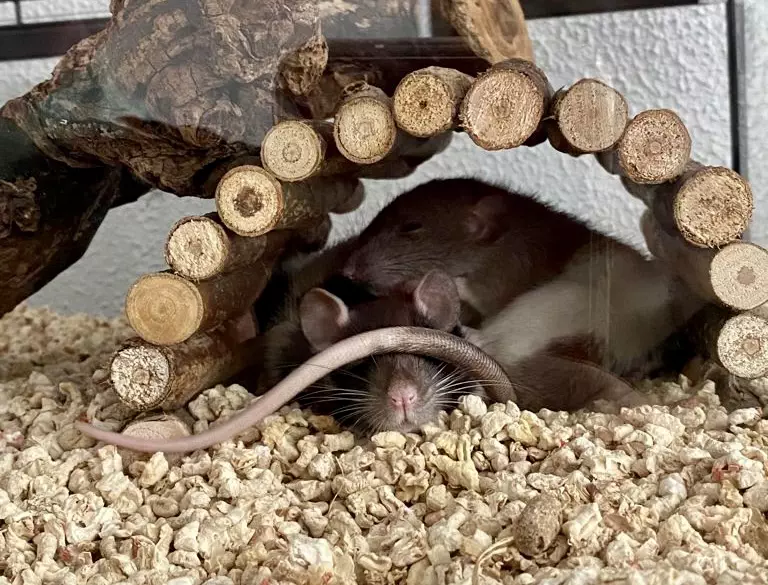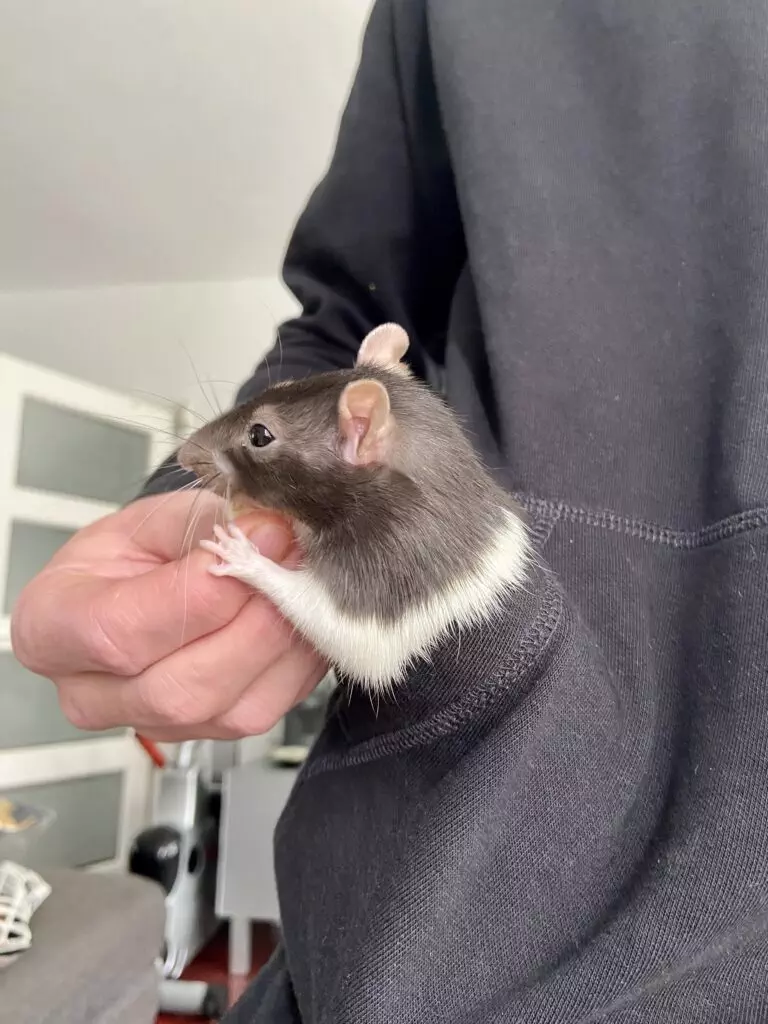‘Rats as pets, why on earth would you want that?’ In many people's minds rats are seen as dirty vermin, while domesticated rats are the coziest rodents as pets and very easy to keep if you’re a student!

Domestic rats are very smart, curious, and social rodents. Therefore, they should always be kept together with at least two. They love to cuddle and play on your lap, shoulder or everywhere they can go. You do not have to walk them like a dog, but on the other hand, you can compare their intelligence with a dog. Rats recognize their owner, they sense how you feel and get really attached to you. They are so smart that you can teach them tricks quite easily, unlike other rodents, that are mostly fun to watch. They are easy and relatively inexpensive to maintain, which is convenient if you are a student.
I am a student, and I am often away during the day. However, I wanted to have pets that I could play with and cuddle in the evening. A dog or cat was too much work, so I quickly came to rodents. My boyfriend used to have rats, so he suggested it. My first reaction was ‘no thank you’. But after watching more and more videos, I got excited about these critters. I like that they are very active and give affection towards their owner. Two weeks later, I went to a rodent store in Breda and yes, now I have two rats named Lilo and Stitch! The funny thing is that during the writing of this article, one is lying on my lap and the other one is looking over towards my laptop from my shoulder.
Housing & care
Rats love variety and exploring, so the cage should be large enough to run around, climb and play. The size of the cage should be at least 100 x 50 x 70 cm (for two rats). These measurements are doable in a student room. A lattice cage is the best choice, as they love to climb. However, the cage must be able to withstand gnawing. A closed glass cage is not recommended, the rats cannot climb, and the smell stays in the cage. Furthermore, you do them a favor with multiple floors, enough sleepers, hammocks, gnawing material, nesting material, a toilet, a water bowl and natural food. There are also several things to consider when it comes to bedding. Rats can't stand dust because of their weak respiratory system, so make sure you have a dust-free bedding that also absorbs enough urine, such as a bathmat or puffed corn. So, no sawdust, newsprint, or pine wood pellets.
You don't have to clean the rat, they wash themselves 100 times a day. You should clean the cage one to two times a week. Don’t do this every day, a rat marks its territory with urine, so if you clean the cage too often the rats will urinate more often, making it smell faster. For the wooden accessories you can buy a special anti-odor spray that kills the bacteria.

Feeding
Rats are omnivores, they like and eat everything. This makes them grow fat quickly. Give them special rat food as a basis and as an extra you can give them fruit and vegetables. Growing rats need more protein, so you can give them a hard-boiled egg occasionally. Do not give your rats spicy, fatty, sweetened, salty food or milk products. There are plenty of food lists on the internet, check them always when you want to try something new.
Price
And now the most important subject for students, the price. Domestic rats can be bought from specialized pet stores or breeders. Pay attention to the following: make sure the seller knows the origin, that the rat has a shiny coat, that they don’t sneeze and is active.
Usually, you will pay around 10 to 30 euros per rat depending on type and color. The ground cover, rat food and snacks will come out to about 20 euros per month, toys and parts for the cage will vary a lot in how much variety you want. On average, a toy costs between 5 and 15 euros. The cheapest is to make these yourself if you are a little creative. The most expensive is a spacious cage, often these are for sale from 90 euros. Convinced? A rat is really a super cozy and an easy pet for a student!
Did you know...
…that a rat is considered sacred in India? The Karni Mata temple (rat temple) is the home of more than 20,000 rats.
…that rats can’t see the color red?
…that rats don't sweat? They regulate their body temperature through blood vessels in the tail.
…that rats hear 150 times better than humans?
…that rats can jump 1.2 meters far and 75 cm high?
…that rats' teeth never stop growing? This is why gnawing is so important.

